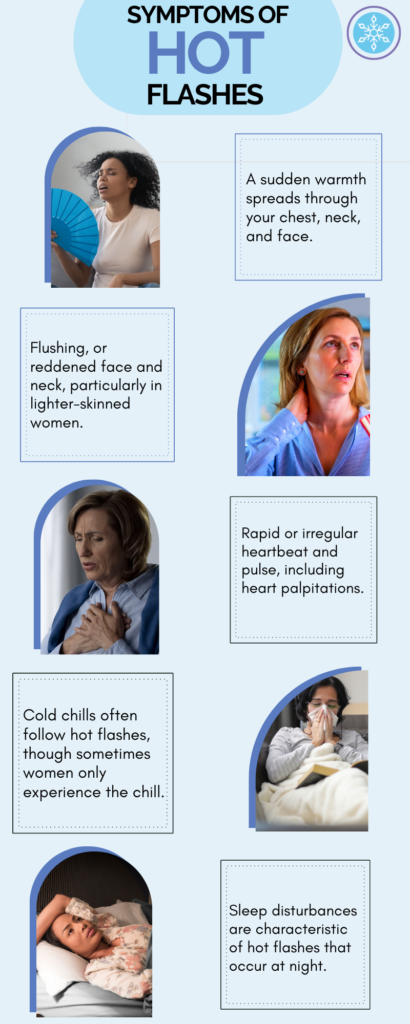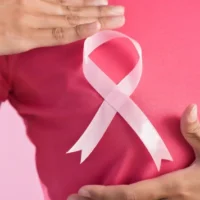All You Need to Know About Hot Flashes
All You Need To Know About Hot Flashes: Imagine you’re going about your day, and suddenly this wave of heat takes over your body, and for those few minutes, there is nothing you can do. You’re simply counting the seconds until it’s over so you can return to your day. If you’ve experienced something like this, you’ve had a hot flash. More than 80% of women experience hot flashes (HFs) during menopause. Defined by transient sensations of heat, sweating, flushing, anxiety, and chills lasting for 1 to 5 minutes. Let’s break down what a hot flash is, what that means for your body and how you can manage them.
What are hot flashes?
Hot flash results from your brain thinking that your body has become overheated. It starts a chain reaction of events to try and cool the body down. The brain goes into a confused state and aggressively unleashes the cool-down process. Hot flashes are a prevalent symptom often associated with menopause, affecting approximately 85% of menopausal women. About 55% of women experience hot flashes as they enter the transition phase toward menopause, indicated by the beginning of menstrual irregularity. These increases in incidence and severity as women enter menopause become most troublesome during the late menopause transition, followed by a gradual decline.
They are a sudden feeling of warmth that spreads over the body, often starting in the head and face. A rapid heartbeat, sweat, and flushing can accompany hot flashes. Some people may also experience chills after a hot second. Hot flashes cause changes in the hormone levels in the body, and various factors, including stress, caffeine, alcohol, and certain medications, can trigger them. Hot flashes may be uncomfortable, but they are usually not harmful. If you are experiencing hot flashes and they are causing you discomfort, talk to a healthcare provider. They can help determine the cause of your hot flashes and recommend treatment options.
So what happens to your body during a hot flash?
-
- The hypothalamus is the part of the brain that controls your core body temperature. It thinks you are too hot (even if you’re not) and signals the brain to initiate the cool-down process.
-
- As a part of the cooling process, the brain goes into overdrive, and the heart begins to pump out blood faster to your blood vessels, and blood rushes towards the skin’s surface, causing the skin to flush.
-
- Your skin temperature rises with the blood vessels opening up (Vasodilation), and there is increased blood flow in your skin to eliminate the perceived extra heat that makes you feel excessively hot.
-
- Your sweat glands immediately respond to perspiring profusely to eliminate the excess heat in the affected skin areas, usually the abdomen, back, arms, neck and face. Sometimes it can affect the entire body too.
-
- Two to five minutes later, the flash is over, you’re damp and sweaty, and your brain believes your core body temperature is average.
-
- This cycle repeats whenever a stimulus, such as an altered skin temperature, triggers it again.
How do they feel?
Hot flashes are a sudden feeling of warmth that can spread throughout the body, particularly in the face, neck, and chest. It is often accompanied by flushing, redness of the skin, and sweating. Some people may also experience a rapid heartbeat, dizziness, or anxiety during a hot flash. Hot flashes can range in intensity and duration and occur at any time of day or night. They are often described as feeling like a sudden, intense heat wave that starts in the upper body and spreads outward. Some people may feel chilled after a hot flash as the body cools down. Hot moments can be uncomfortable and disruptive, but they are generally not harmful.
Hot flashes usually last anywhere from a few seconds to a few minutes. Some people may experience hot flashes that are longer or more frequent, while others may only have them occasionally. Hot flashes are a symptom of menopause. Moreover, certain medications or medical conditions can also cause them. If you are experiencing hot flashes that interfere with your daily life, you must talk to a healthcare provider. They can help determine the cause of your hot flashes and recommend treatment options.
Why do they happen?
All You Need To Know About Hot Flashes are a common symptom often associated with menopause, a duration in a woman’s life when her menstruation stops and she can no longer become pregnant. During menopause, the levels of the hormones, namely estrogen and progesterone, begin to decline in a woman’s body. These hormone changes can cause the blood vessels in the skin to dilate or expand, leading to hot flashes.
Hot flashes can also be caused by certain medications, such as antidepressants, blood pressure medications, and medications used to treat cancer. In addition, hot flashes can be a side effect of certain medical conditions, such as low blood sugar, infections, and certain types of cancer.
During menopause, hot flashes often occur at night and can disrupt sleep. The body’s temperature regulation system becomes less efficient as estrogen levels decline. As a result, the body may have difficulty maintaining a stable internal temperature, leading to hot flashes and night sweats.
Know all about Temperature control cooling Cap
All You Need To Know About Hot Flashes – symptoms?

A hot flash’s main symptom is a sudden warmth that gradually spreads over the body, often starting in the head and face. A rapid heartbeat, sweat, and flushing can accompany hot flashes. Some people may also experience chills after a hot second.
During a hot flash, the skin may become red and warm to the touch, and the person may sweat. They may also feel dizzy or experience a headache. Hot flashes can be uncomfortable and may interfere with sleep.
All You Need To Know About Hot Flashes- Treatment Options
There are numerous ways to manage hot flashes and reduce their frequency or intensity:

Dress in layers: Wearing lightweight, breathable clothing can help regulate your body temperature and reduce the severity of hot flashes.

Keep calm: Hot flashes can be triggered by warm environments, so keep your home and workspace cool. Use a fan or air conditioner, and avoid activities that generate heat, such as exercising or cooking during the hottest day.

Stay hydrated: You may prefer drinking plenty of fluids to regulate your body temperature and prevent hot flashes. An average of eight glasses of water per day may work.

Avoid triggers: Certain foods and beverages, such as alcohol, caffeine, and spicy foods, can trigger hot flashes. Try to identify and avoid your triggers.
Practice relaxation techniques: Stress and anxiety can exacerbate hot flashes. Try deep breathing, meditation, or other relaxation techniques to manage stress and reduce the frequency of hot flashes.
Consider hormone therapy: Hormone therapy involves taking estrogen or a combination of estrogen and progesterone, which can help manage several menopause symptoms, including hot flashes. This treatment is inappropriate for everyone, so you must prefer discussing the risks and benefits with your healthcare provider.
Try over-the-counter remedies: Some over-the-counter medications, such as black cohosh, may help reduce hot flashes. However, the effectiveness of these remedies needs to be better established, and they may only be suitable for some.
If your hot flashes are severe or persist despite self-care measures, it is a good idea to speak with your healthcare provider for further evaluation and treatment. They may help you determine the cause of your hot flashes and recommend appropriate treatment options.
All You Need To Know About Hot Flashes Prevention
The solution to hot flashes or the best way to prevent hot flashes is through the Kulkuf cooling wristband. The device is designed with a patented technology that reduces your core body temperature and stops the hot moment in its tracks. Clinical studies show that 93% of users got instant relief from hot flashes in under 60 seconds.
Conclusion
Hot flashes are the most considerable symptom of menopause. The severity and intensity of hot flashes vary from person to person. However, hot flashes can be experienced day and night and last between 2 to 5 minutes. While there are well-known ways to manage hot flashes, the solution to hot flashes is now on your wrist with the Kulkuf cooling wristband.
Our Products:
KÜLKUF Cooling Wristband For Hot Flashes









